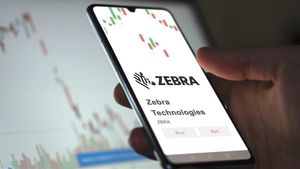- PXL065 Phase 2 trial for the treatment of NASH met its primary efficacy endpoint for liver fat content reduction at 36-weeks for all doses.
- Histology findings from paired liver biopsies showed strong improvement in fibrosis without worsening of NASH, consistent with dose-dependent reduction of all biomarkers related to fibrogenesis and fibrosis risk scores; improvement seen in other NASH histology components.
- Additional benefits on glucose control (HbA1c) and multiple indices of insulin sensitivity.
- Validation of PXL065 hypothesis - combining efficacy on liver and metabolic endpoints with reduced potential for PPARγ side effects (weight gain and edema).
- Investor webcast today to further discuss data
The management team will host webcast conference calls on Wednesday, September 21 at:
- 1:00 pm CEST, Paris time (7:00 am ET) in French and
- 8:45 am ET, New York time (2:45 pm CEST) in English.
A presentation will be available after the event on Poxel's website in the Investor section.
To register for the webcast in French: https://us02web.zoom.us/webinar/register/WN_z5Pgz18KRBqubDQ2QCjm7A
To register for the webcast in English: https://us02web.zoom.us/webinar/register/WN_WC9_M_yvR_aKmJVcHJPXrg
POXEL SA (Euronext : POXEL - FR0012432516), clinical stage biopharmaceutical company developing innovative treatments for chronic serious diseases with metabolic pathophysiology, including non-alcoholic steatohepatitis (NASH) and rare metabolic disorders, today announced positive histology results for DESTINY-1 (Deuterium-stabilized R-pioglitazone [PXL065] Efficacy and Safety Trial In NASH), the dose-ranging Phase 2 trial of PXL065 for the treatment of NASH. PXL065 is a novel, proprietary deuterium-stabilized R-stereoisomer of pioglitazone which has reduced PPARγ activity, but retains non-genomic thiazolidinedione (TZD) actions.
“Pioglitazone’s positive effects in 6 independent prior trials where NASH patients were assessed via liver biopsy propelled the study of PXL065 in patients with NASH and fibrosis. PXL065 is differentiated from pioglitazone based on its distinct pharmacology and lower potential for PPARγ-mediated side effects,” said Stephen Harrison, MD, President, Summit Clinical Research, and principal investigator of this study. “The primary endpoint findings observed on liver fat content reduction along with the other positive findings observed in secondary analysis of key histopathologic features of NASH and fibrosis are promising. When coupled with the benefits seen in glycemic control and a very good safety and tolerability profile, larger studies in NASH are warranted.”
“In addition to our previously reported finding of clinically meaningful improvements in liver fat content and circulating biomarkers related to NASH and metabolic health, these results address the high unmet need for fibrosis improvement that remains, particularly for oral products, which we believe will be the cornerstone to treatment,” said Thomas Kuhn, CEO of Poxel. “Based on pioglitazone’s proven efficacy in NASH, PXL065 could become a key product for the treatment of NASH, alone and in combination with other treatment modalities. We will initiate discussions to pursue a potential pivotal program in NASH – leveraging the FDA 505(b)(2) regulatory path and the extensive safety database of pioglitazone as an approved medicine for Type 2 diabetes – which would represent a potentially accelerated and de-risked development with a high probability of success.”
Summary of Phase 2 NASH (DESTINY-1) PXL065 Study Results
DESTINY-1 is a Phase 2, 36-week, randomized, dose-ranging, double-blind, placebo-controlled, parallel group study designed to assess the efficacy and safety of PXL065 in patients with noncirrhotic biopsy-proven NASH across multiple clinical sites in the US. The primary endpoint of the study measured the relative change in the percentage of liver fat content based on magnetic resonance imaging-estimated proton density fat fraction (MRI-PDFF). The study also assessed the effects of PXL065 on liver histology and other metabolic and non-metabolic biomarkers.
117 subjects were randomized to one of 4 daily (QD) treatment arms (7.5 mg, 15 mg, 22.5 mg, placebo). Analysis of histologic changes was based on paired liver biopsies in PXL065 vs. placebo-treated NASH patients before and after the 36-week treatment period. This trial was not powered to detect statistically significant changes in histology endpoints.
New top line results pertaining to liver histology and additional parameters included:
Biopsy Endpoints
- Fibrosis improvement by >1 stage without worsening of NASH, an endpoint recognized by FDA for approval, occurred in 31-50% patients in the PXL065 study arms vs. 17% with placebo. Across all PXL065 treatment arms (pooled data), 39% of patients had fibrosis improvement by ≥1 stage without worsening NASH (%) vs. 17% with placebo.
- Worsening of fibrosis by >1 stage was observed in 9-12% of patients in PXL065 arms vs. 26% with placebo.
- A >2 point improvement in the NAFLD Activity Score (NAS) with no worsening of fibrosis was observed in 50% of PXL065 treated patients at the 15 and 22.5 mg dose levels vs. 30% with placebo.
- Across all PXL065 treatment arms (pooled data), 26% of patients achieved NASH resolution with ≥1 stage fibrosis improvement vs. 13% with placebo.
Changes in Liver Fat and Key Markers of Fibrosis and Liver Injury
- The primary efficacy endpoint was achieved: a statistically significant (p=0.024 to p=0.008) mean relative decrease vs. placebo of 21% to 25% in liver fat content from baseline to 36 weeks was observed at all PXL065 doses. 40% of patients who received PXL065 at the 22.5 mg dose achieved a >30% relative reduction in liver fat content (previously reported).
- Trend in least-square mean ALT decreases up to 18.4 IU/L vs. baseline. Subjects experiencing a decrease in ALT by more than -17U/L were numerically higher in the PXL065 groups (38% to 54%) versus placebo (26%) (previously reported).
- Statistically significant dose-dependent decreases in PIIINP (fibrogenesis biomarker, p=0.02 at 22.5 mg) and the NAFLD Fibrosis Score (p=0.04 at 22.5 mg) along with favorable trends for dose-dependent improvements in other markers of fibrogenesis/fibrosis risk (ProC31, ELF, Fib4) were observed.
Metabolic Parameters
- A dose-dependent decrease in HbA1c (up to 0.41 % placebo-adjusted; p=0.003 at 22.5 mg) was observed; in patients with co-existing Type 2 diabetes, the placebo-adjusted change was up to -0.56%. Given baseline HbA1c values indicating good glucose control on existing Type 2 diabetes treatments (6.1-6.3% overall; 6.6-7.4% in T2D), these effects are potentially clinically meaningful.
- Improvements in insulin levels and insulin sensitivity indices (HOMA-IR, Adipo-IR, QUICKI) were also observed.
- Modest plasma adiponectin level increase of up to +5.26 ug/mL (p<0.0001 vs. placebo at 22.5 mg); consistent with limited degree of PPARγ activation and observed safety profile with reduced potential for weight gain or peripheral edema.
Safety & Tolerability
- There was no dose-dependent increase in body weight: a minimal least-square mean increase of 0.68 kg was observed at the top dose of 22.5 mg vs. placebo (previously reported).
- Low incidence of edema without observed treatment or dose relation when compared to placebo (previously reported).
- With respect to other safety measures, PXL065 was observed to be generally safe and well tolerated; the number of patients presenting with treatment-emergent serious adverse events (TESAEs) were similar among all groups including placebo without dose effect. None were treatment related (previously reported).
Pharmacokinetics
- As predicted, pharmacokinetic measurements showed dose-proportional drug levels with the desired degree of higher exposure to the pioglitazone R-stereoisomer and reduced exposure to the (PPARγ active) S-stereoisomer (previously reported).
The full Phase 2 results will be submitted for presentation at an upcoming scientific meeting.
About PXL065
PXL065 is a novel, proprietary deuterium-stabilized R-pioglitazone. Although pioglitazone is not approved by the FDA for the treatment of NASH, it is the most extensively studied drug for NASH; in multiple prior trials, improvements in liver histology, including reductions in fibrosis, were demonstrated2,3. Pioglitazone is the only drug recommended for biopsy-proven NASH patients by the Practice Guidelines published by the American Association for the Study of Liver Diseases (AASLD) and the European Association for the Study of the Liver (EASL)4. Pioglitazone’s off-label use for NASH, however, has been limited due to the PPARγ-related side effects, which include weight gain, bone fractures and fluid retention.
Pioglitazone is a 1:1 mixture of two mirror-image compounds (R- and S-stereoisomers) that interconvert in vivo. Using deuterium, Poxel stabilized each stereoisomer and characterized their different pharmacological properties. In in vitro studies, PXL065 has been shown to target non-genomic pathways including mitochondrial pyruvate carrier (MPC) and acyl-CoA synthetase 4 (ACSL4). In preclinical animal models, PXL065 exhibits the NASH efficacy associated with pioglitazone with no significant weight gain or fluid retention, side effects which are associated with the S-stereoisomer5. NASH Phase 2 (DESTINY 1 trial) results available to-date show statistically significant effects of PXL065 on liver fat content, biomarkers related to liver fibrogenesis-fibrosis risk, as well as positive effects on fibrosis and other key parameters based on histology analysis. Relative to published data for pioglitazone, reduced potential for weight gain and edema was also evident. Based upon preclinical, Phase 1 and Phase 2 results, Poxel believes that PXL065 may have a better therapeutic profile than pioglitazone for NASH and may also have suitable properties for further development in other indications including adrenoleukodystrophy (ALD).
About NASH
Non-alcoholic steatohepatitis (NASH) is a metabolic disease with no clear disease origin that is quickly becoming a worldwide epidemic. It is characterized by the accumulation of fat in the liver causing inflammation and fibrosis. The disease can be silent for a long period of time, but once it accelerates, severe damage and liver cirrhosis can occur, which can significantly impact liver function or can even result in liver failure or liver cancer. Typical risk factors for NASH include obesity, elevated levels of blood lipids (such as cholesterol and triglycerides) and type 2 diabetes. Currently no curative or specific therapies are available.
About Poxel SA
Poxel is a clinical stage biopharmaceutical company developing innovative treatments for chronic serious diseases with metabolic pathophysiology, including non-alcoholic steatohepatitis (NASH) and rare disorders. For the treatment of NASH, PXL065 (deuterium-stabilized R-pioglitazone) met its primary endpoint in a streamlined Phase 2 trial (DESTINY-1). In rare diseases, development of PXL770, a first-in-class direct adenosine monophosphate-activated protein kinase (AMPK) activator, is focused on the treatment of adrenoleukodystrophy (ALD) and autosomal dominant polycystic kidney disease (ADPKD). TWYMEEG® (Imeglimin), Poxel’s first-in-class product that targets mitochondrial dysfunction, is now marketed for the treatment of type 2 diabetes in Japan by Sumitomo Pharma and Poxel expects to receive royalties and sales-based payments. Poxel has a strategic partnership with Sumitomo Pharma for Imeglimin in Japan, China, and eleven other Asian countries. Listed on Euronext Paris, Poxel is headquartered in Lyon, France, and has subsidiaries in Boston, MA, and Tokyo, Japan.
For more information, please visit: www.poxelpharma.com
All statements other than statements of historical fact included in this press release about future events are subject to (i) change without notice and (ii) factors beyond the Company’s control. These statements may include, without limitation, any statements preceded by, followed by or including words such as “target,” “believe,” “expect,” “aim,” “intend,” “may,” “anticipate,” “estimate,” “plan,” “project,” “will,” “can have,” “likely,” “should,” “would,” “could” and other words and terms of similar meaning or the negative thereof. Forward-looking statements are subject to inherent risks and uncertainties beyond the Company’s control that could cause the Company’s actual results or performance to be materially different from the expected results or performance expressed or implied by such forward-looking statements. The Company does not endorse or is not otherwise responsible for the content of external hyperlinks referred to in this press release.
1 The dose-dependent decrease in Pro-C3 announced in the top line press release on August 30, 2022 was actually a decrease in the closely related PIIINP biomarker.
2 Cusi, et al., Ann Intern Med. 2016, 165(5), 305-315.
3 Musso et al. Hepatology 2017; 65: 1058-1061.
4 J Hepatol. 2016, 64:1388-402; Hepatology 2018, 67: 328-357.
5 Jacques et al. Hepatol Comm 2021; 5:1412-1425.
View source version on businesswire.com: https://www.businesswire.com/news/home/20220920006288/en/
Contacts
Contacts - Investor relations / Media
Aurélie Bozza
Investor Relations & Communication Senior Director
aurelie.bozza@poxelpharma.com
+33 6 99 81 08 36
Elizabeth Woo
Senior Vice President, Investor Relations & Communication
elizabeth.woo@poxelpharma.com
NewCap
Emmanuel Huynh or Arthur Rouillé
poxel@newcap.eu
+33 1 44 71 94 94






